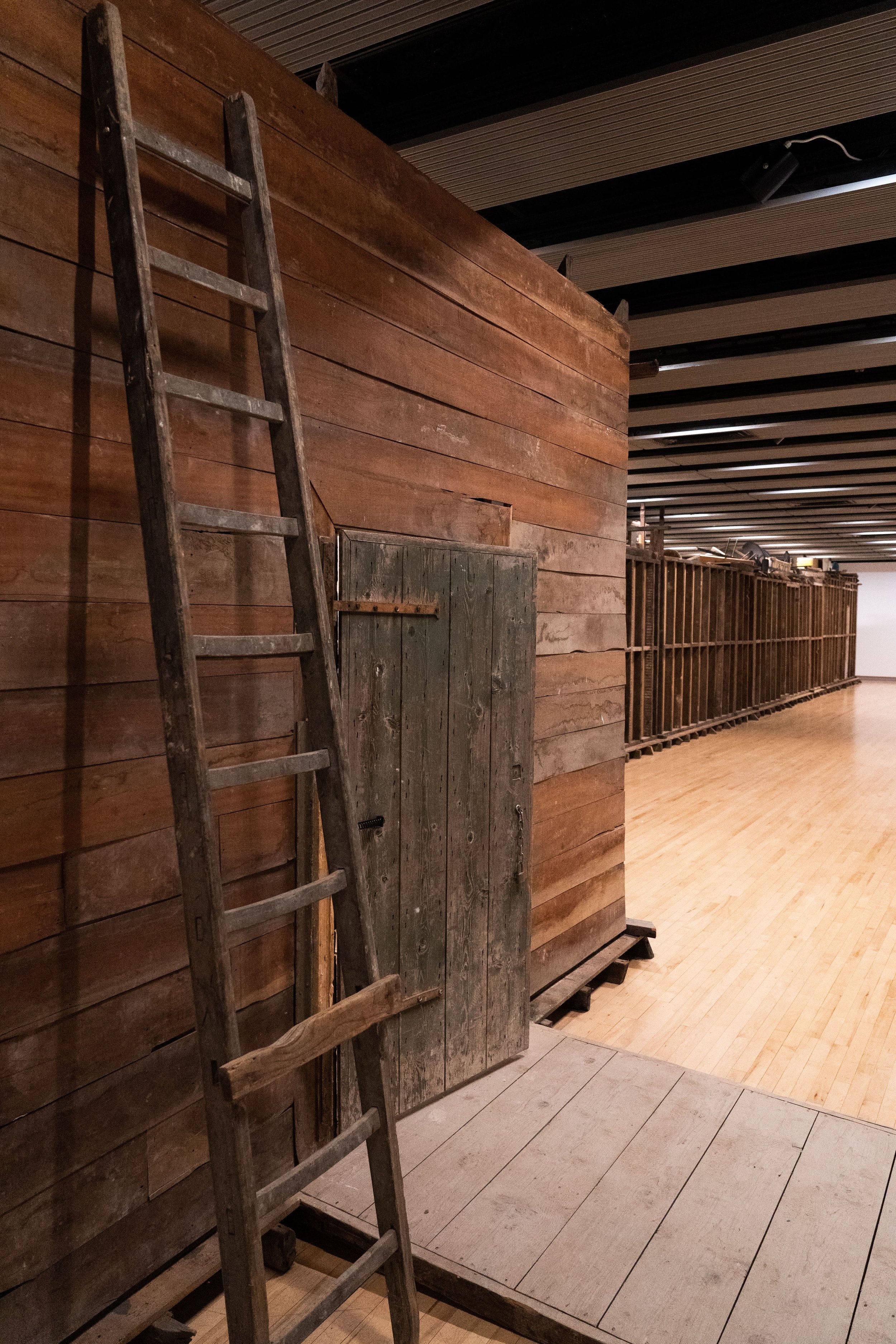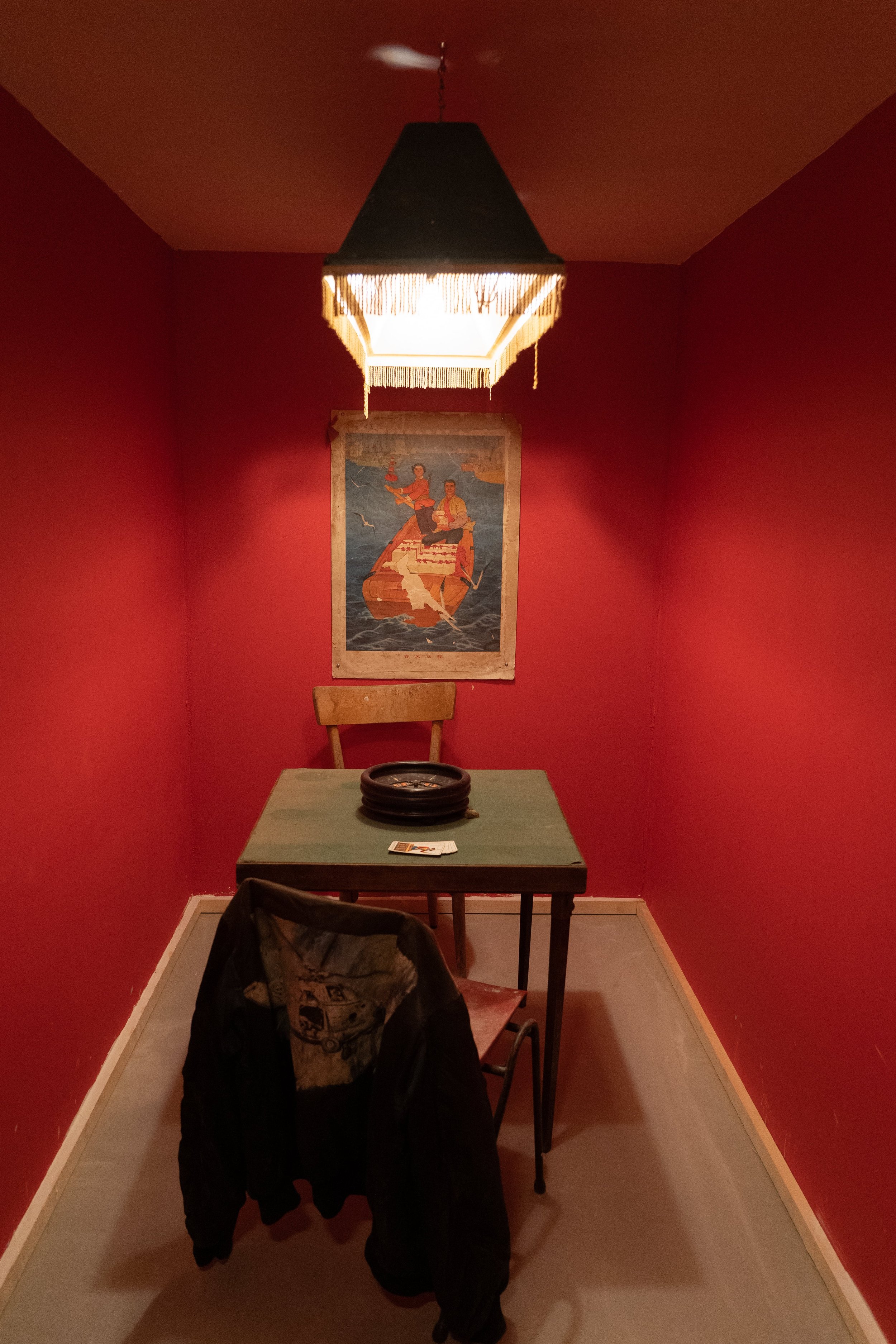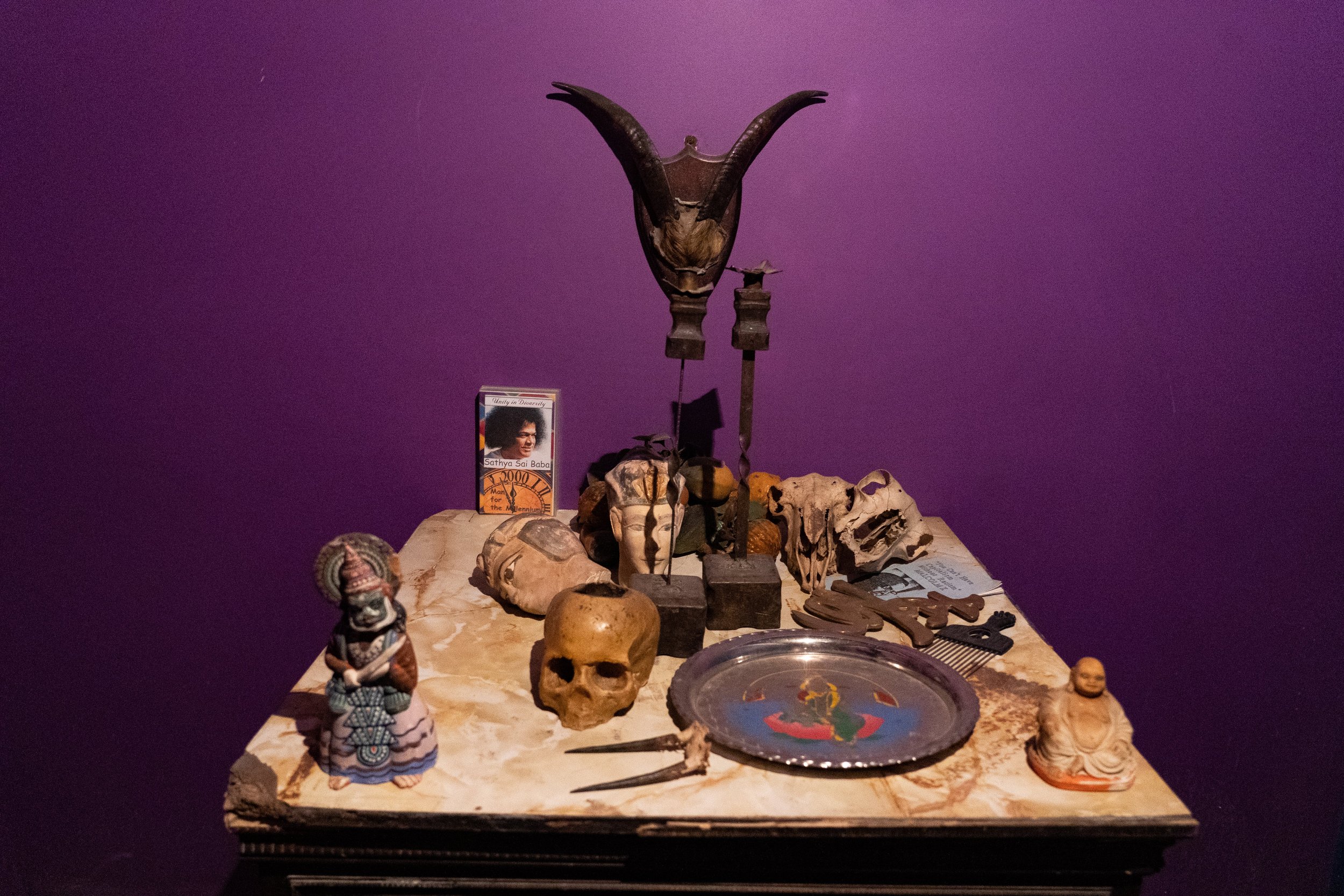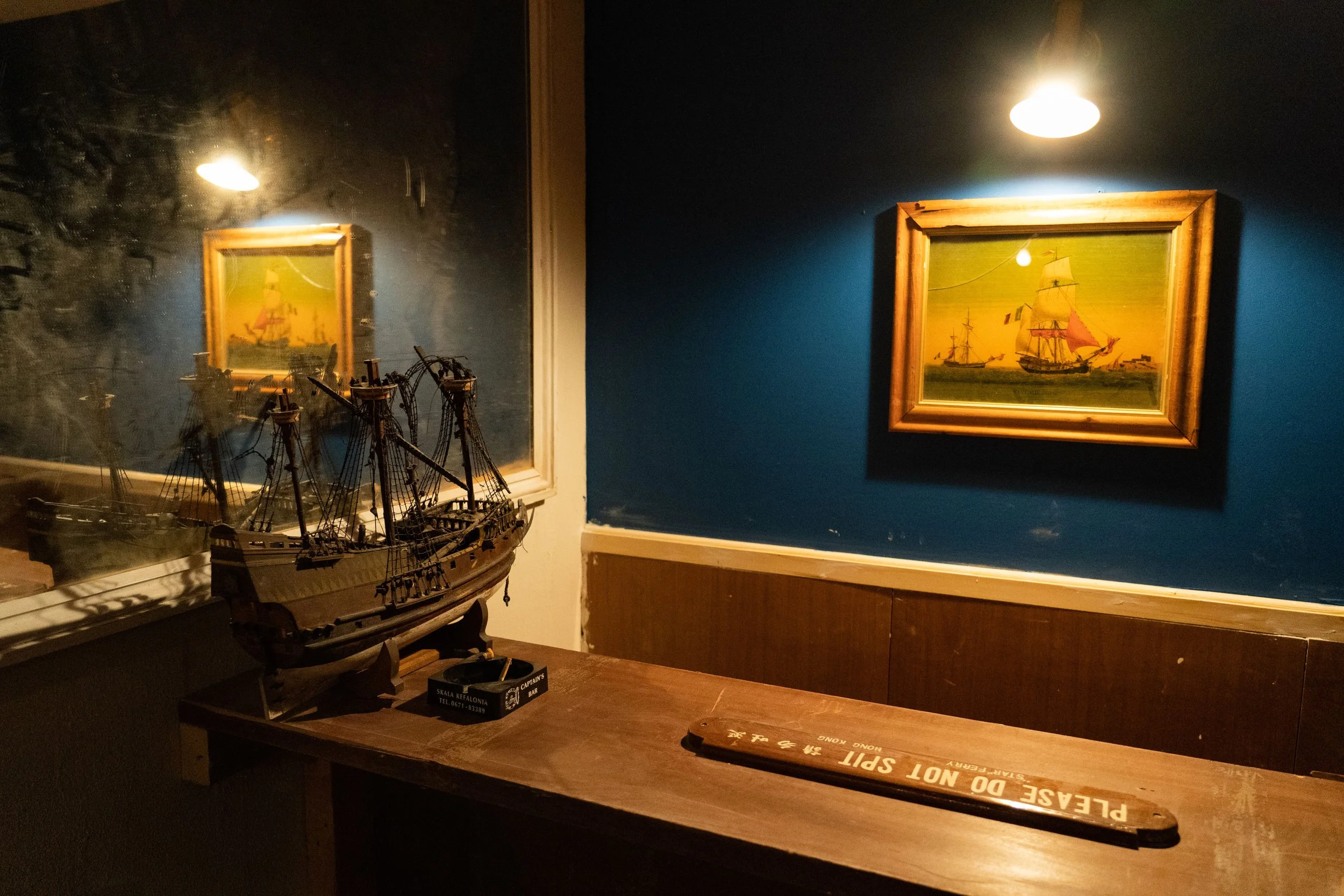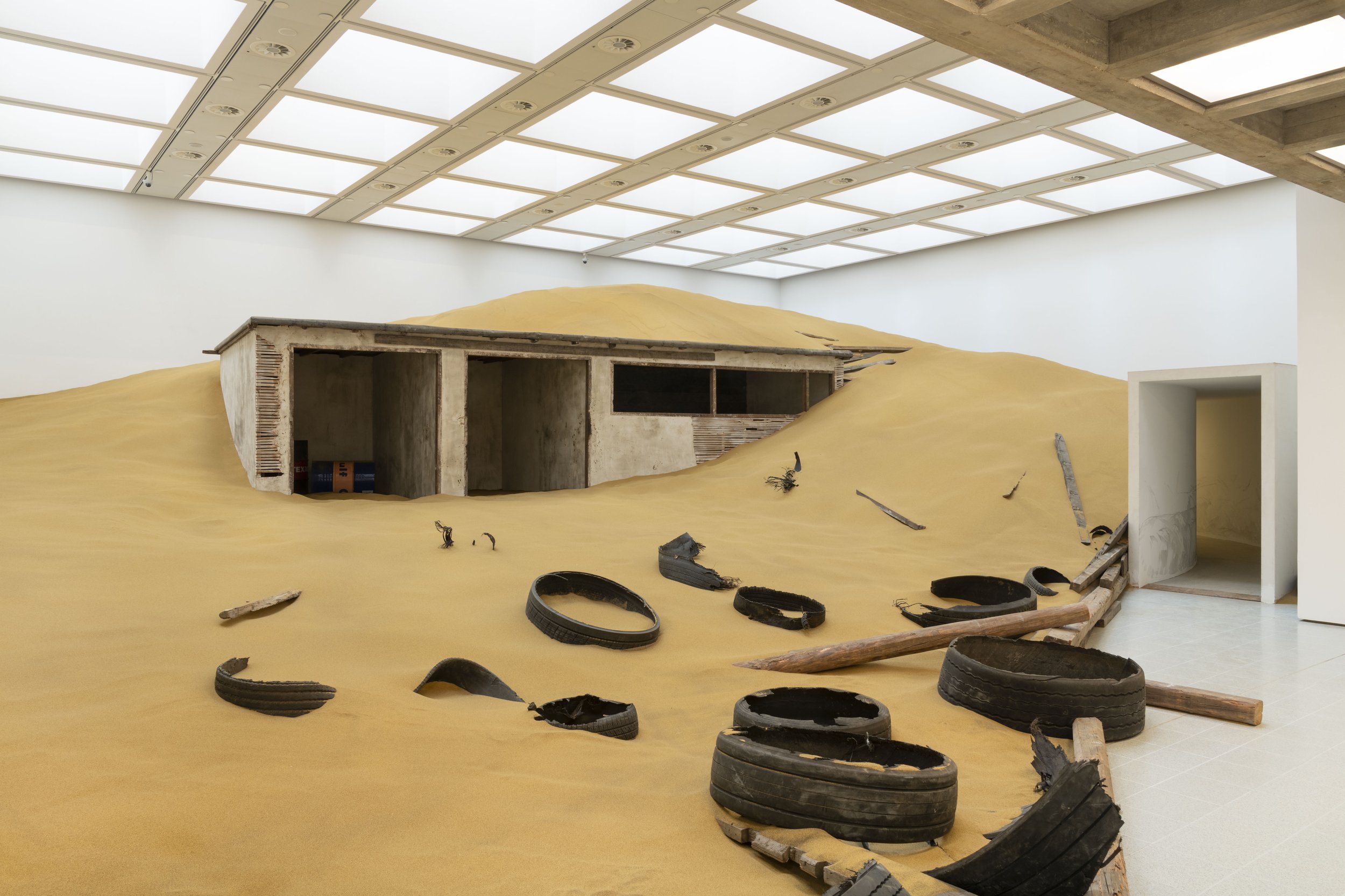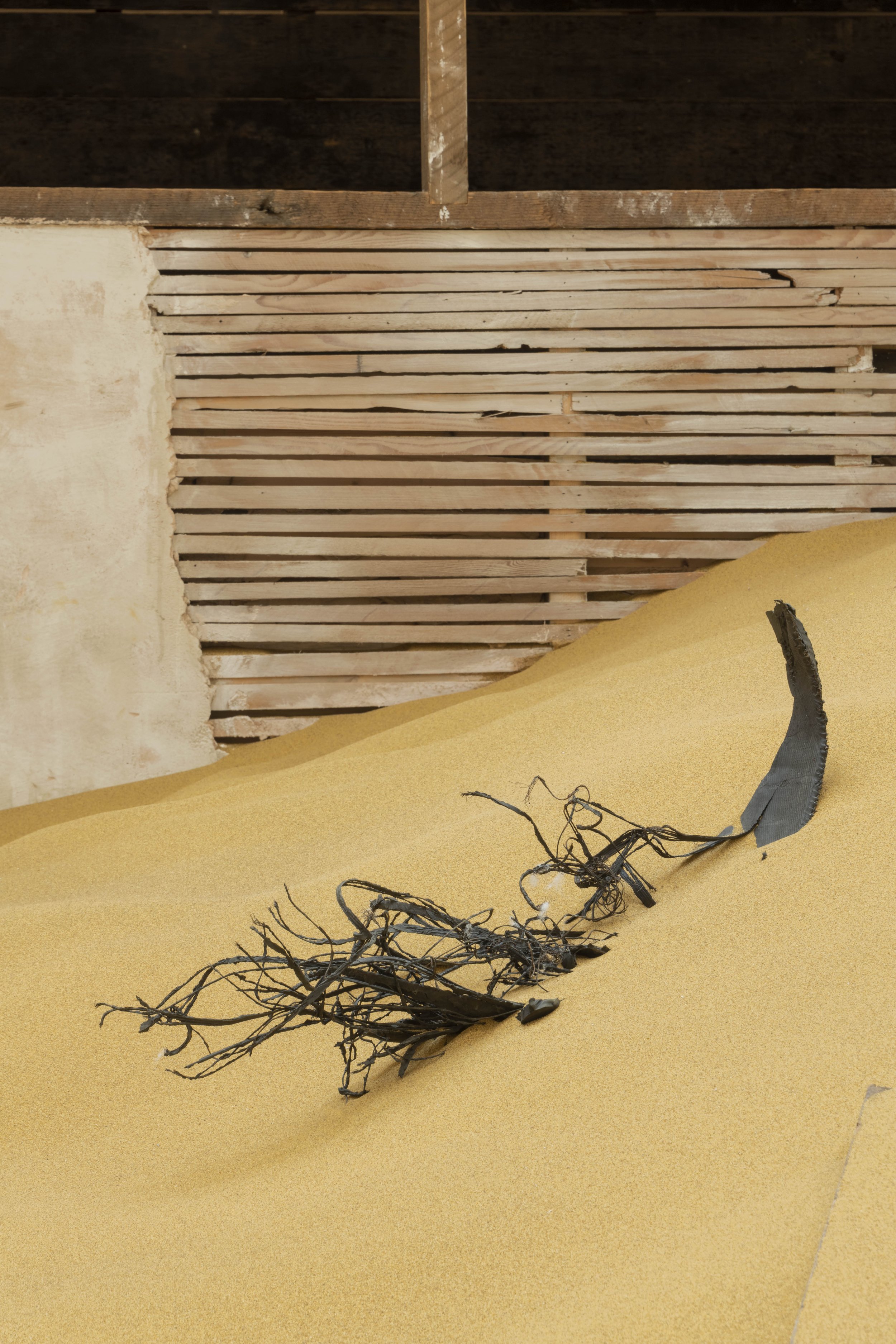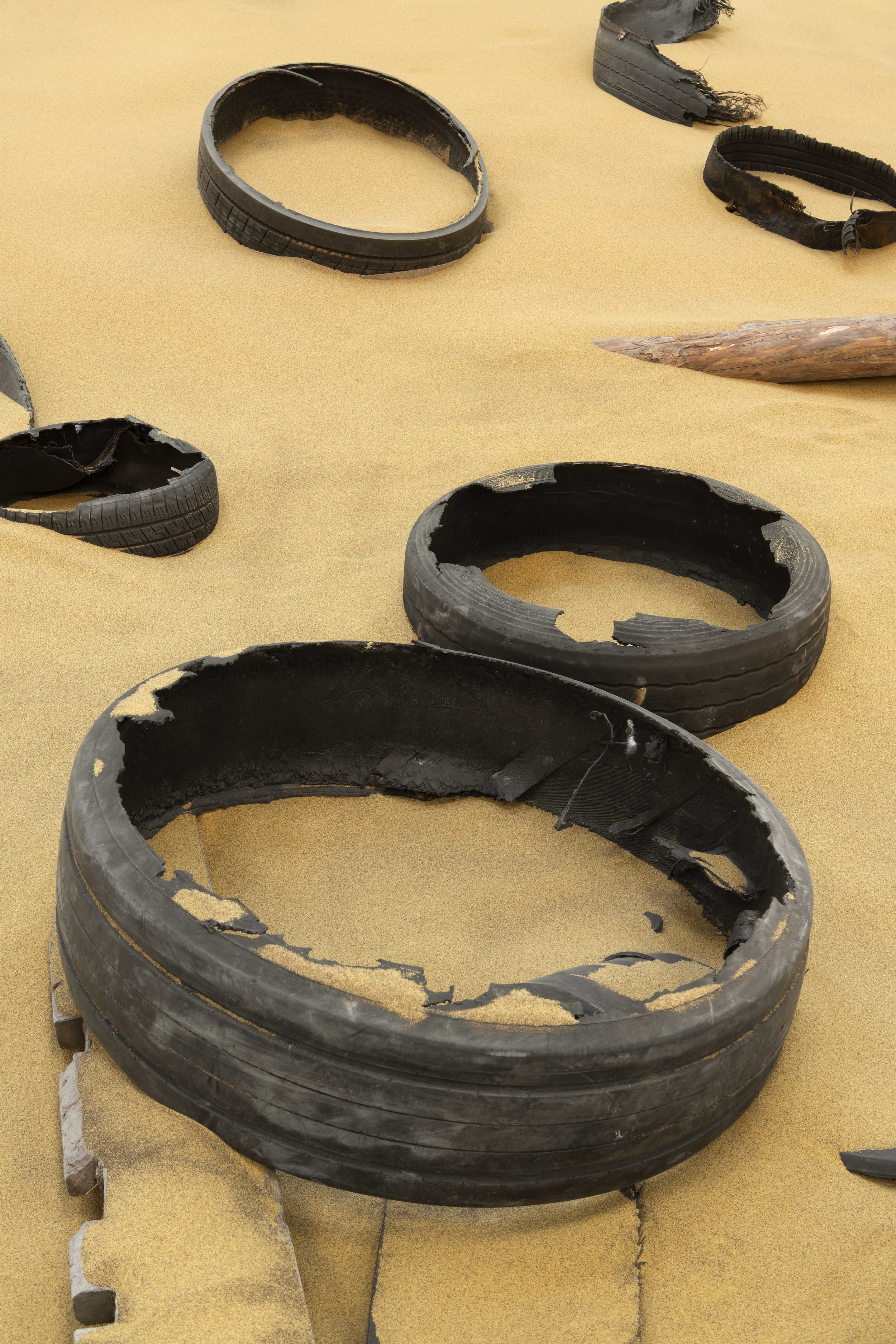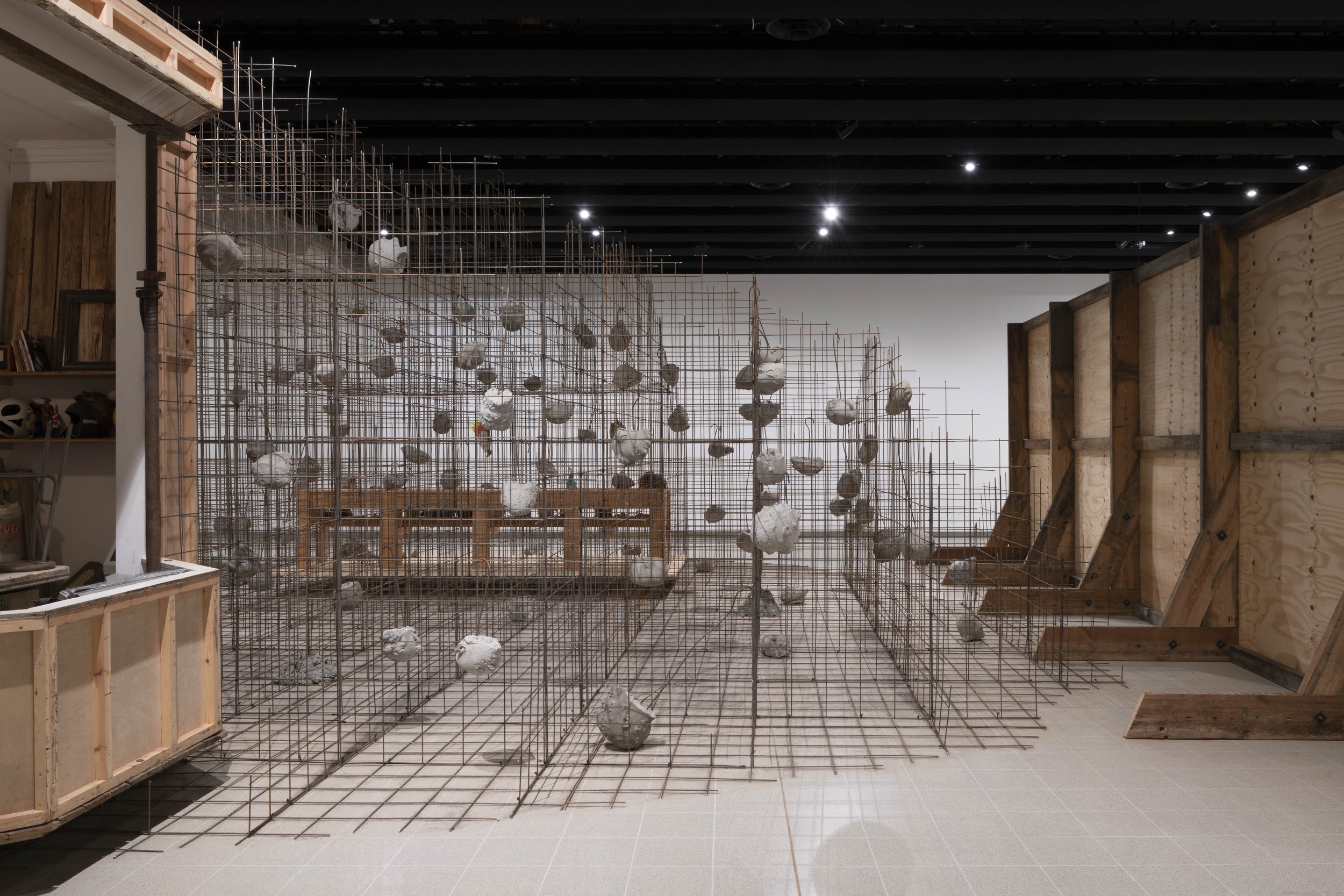Mike Nelson: Extinction Beckons @ The Hayward Gallery
The first major large-scale immersive and psychologically charged installations and sculptures by internationally acclaimed British artist Mike Nelson have taken over the Hayward Gallery. The atmospheric installations are designed to be interactive and transport viewers into uncanny fictional environments that stimulate eerily realistic yet dystopian worlds.
“My intent has always been to make immersive works that operate on multiple levels. They should have a narrative, a spatial aspect, but also a psychological effect on the senses: you’re seeing and feeling one thing whilst your brain is trying to override this and tell you something else.”
The exhibition features sculptures and new versions of Nelson’s thrilling installations created over three decades — many of which are shown at the Hayward Gallery for the first time since they were initially presented. Constructed using salvaged materials from the artist’s surrounding environments, the installations appear life-like and completely believable. Nothing is random. Instead, the objects were specifically chosen to evoke science fiction sensations and further interweave elements and ideas about apocalyptic future realities and counterculture, all of which are central to his oeuvre.
Installation view. I, IMPOSTOR, 2011. Various materials. Photo: Matt Greenwood. Courtesy of the artist and the Hayward Gallery.
I, Imposter (2011), opens the show. Visitors enter a densely packed room filled with an amalgamation of strange broken materials, wrapped junkyard furniture, architectural scraps, and lost items spilling out of boxes. They are stacked high on shelving racks and pushed against the walls to resemble an unkept storage facility. Structured to fill the room, the viewer feels small and completely engulfed, heightening their sensitivity and fear.
Further contributing to this curious essence is the monochromatic red light that inundates the space. Although this will become a recurring theme throughout the exhibition, presenting it immediately upon entry forces everything from the outside world to be forgotten.
Additionally, the environment's omnipresent yet vague sense of familiarity is jarring. Whilst one can recognise the objects within the space, there is a constant sense of unease. Fully entrenched in the light, musty and chemical smells, Nelson immediately transports the viewer to an alternative dimension that evokes a photographic dark room, and as the viewers, trapped in a different time and place.
Installation view. The Deliverance and The Patience, exterior and interiors, 2001. Various materials. Photo: Liam Harrison. Courtesy of the artist and the Hayward Gallery.
Without a moment's pause to recover from the hazy atmosphere in the previous installation, spectators are ushered into the extensive maze entitled The Deliverance and The Patience (2001). People are free to roam through the labyrinthine series of passageways and corridors leading to interconnected rooms expanding across spatial and visual narratives. Even so, Nelson's seamless orchestration breaks down any sense of narrative. Instead, layers of lost and abandoned histories within inhibited spaces collide with one another. Dirty workshops with abandoned work; a cult worshipping altar for twisted prayer; a travel agent's office; an abandoned bunker; and a gambling den with tarot cards left spread out as if in mid-game are some of the many spaces that together are combined to create a disorientating labyrinth. One never knows what to find when turning a corner among the seemingly endless corridors and doors.
The echo of slamming doors, as are the various rooms, is equally unnerving. The multiple references and range of materiality suggest the possibility of violence, disaster and societal decay. The detail of the word ‘help’ inscribed into the layer of dust found on the round mirror in the old sea captain’s bar is particularly striking. Whether placed there by Nelson, or a visitor visualising their inner fears within the installation, this moniker expresses exactly what each visitor begins to think the more time they spend in the space. Nelson’s installations preserve fragmented moments that pique one’s addictive curiosity, leaving room for varied interpretations.
Installation view. Triple Bluff Canyon (the woodshed), 2004. Various materials. M25, 2023. Found tyres. Photo: Matt Greenwood. Courtesy of the artist and the Hayward Gallery.
“Mike Nelson’s installations are ‘interactive’ in the very best sense: through potent arrangements of culturally and psychologically charged props and architectural structures, they prompt each viewer to imagine a story that makes sense of the scene before them. Though his installations sometimes physically enclose us, their open-ended narratives beckon to a seemingly endless play of possibilities – even as they conjure bleak scenarios evocative of the fringes and margins of society.”
Installation view. Triple Bluff Canyon (the woodshed), 2004. Various materials. M25, 2023. Found tyres. Photo: Matt Greenwood. Courtesy of the artist and the Hayward Gallery.
Heading upstairs, Triple Bluff Canyon (the woodshed) (2014) is a woodshed and busted car tyres drowning in a sea of sand, conjuring the imagery of desert landscapes. This particular piece is Nelson’s version of American artist Robert Smithson's iconic earthworks and combines it with his sci-fi portrayal of a post-apocalyptic world that his work embodies. This striking piece holds substantial political conflict due to its ties with the Middle East and Iraq. It was created during the Iraq war and, over time, has been assumed to represent other conflicts, especially for recent environmental crises.
Similar to Smithson’s work, Triple Bluff Canyon (the woodshed) epitomises key themes within Nelson’s oeuvre, such as entropy, the inevitable and gradual decline into disorder over time and the collapse of any system. The artist plays with the idea of function and value, evident throughout his oeuvre. His philosophy on the experience and significance of material and the recycling of material is distinctive to his ethos.
For instance, the blown-out tyres were collected and salvaged, following in line with Nelson’s view of them as ready-made sculptures. M25 (2023, Found tyres), titled after each road in the city in which they are being exhibited were collected from the M25 road in London. The deformed and torn forms of the tyres are evident in the act of their creation. Violent and destructive. Scattered within the sand dune, they are a visual representation of the legacy of destructive wars or a promise of a dystopian future.
Installation view. Studio Apparatus for Kunsthalle Münster - A Thematic Instalment Observing the Calendrical Celebration of its Inception: Introduction; towards a linear understanding of notoriety, power, and their interconnectedness; futurobjecs (misspelt); mysterious island* *see introduction or Barothic shift, 2014. Various materials. Triple Bluff Canyon (the projection room), 2004. Photo: Matt Greenwood. Courtesy of the artist and the Hayward Gallery.
On the gallery's lower level, Studio Apparatus for Kunsthalle Münster series (2014) recombines motifs and materials from Nelson’s previous works to explore his site-based approach to making art, parodying the studio as a place for authentic artistic creation. Nelson states that the wire mesh cloud represents a fluid container that holds past works of art and unrealised potential ideas. Sci-fi is a prominent recurring theme running through the exhibition space. The floating concrete heads appear to be trapped or contained within the infrastructure. In line with the artist’s symbolism, the solidity of the heads could represent physical ideas collecting inside one’s mind. His large-scale works, designs, and materials adhere to the macro and micro levels of detail that truly submerge viewers into Nelson’s science fiction dimensions.
Installation view. The Amnesiacs, 1996-ongoing. Various materials. Photo: Matt Greenwood. Courtesy of the artist and the Hayward Gallery.
Next to this is The Amnesiacs (1996 - ongoing); the work is based on The Amnesiacs, a fictional biker gang invented by Nelson in the 1990s. The series of sculptures are positioned inside wire cages. The gang is comprised of military veterans from the Gulf War (1990–91) who have post-traumatic stress disorder. From their dissociative episodes and trauma perspective, Nelson works intuitively with found objects that bring their own chaotic, dislocated histories, continuously adding to the installation over the years. Viewers are positioned in the same perspective, partial recollections of the past and dissociative ties to memories; it is upon the viewer to bring their own interpretations and experiences.
Installation view. Studio Apparatus for Kunsthalle Münster - A Thematic Instalment Observing the Calendrical Celebration of its Inception: Introduction; towards a linear understanding of notoriety, power, and their interconnectedness; futurobjecs (misspelt); mysterious island* *see introduction or Barothic shift, 2014. Various materials. Photo: Matt Greenwood. Courtesy of the artist and the Hayward Gallery.
Nelson’s immersive installations are frozen in time for attendees to step into alternative yet eerily possible worlds. Through Nelson's materiality and artistic shaping of spaces, he emphasises specific qualities of memories while preserving a sense of mystery about their past. His work encourages viewers to actively engage and look for connections in the overwhelming details they encounter and explore. Further compelling visitors to experience the intensity of subliminal messages Nelson weaves within his work, feelings of ambiguity, suspense, disorientation and dissolution.
The fictive installations leave visitors exposed and raw to the powerful themes and dystopian messages. In his constructed realities, Nelson fuses fiction with politics and offers multiple histories; the artist conjures imagined spaces inviting viewers to participate in the exhibition, leave them affected by its disturbing contents, and ponder its weight in reality.
It is Mike Nelson’s world, and we are living in it.
Mike Nelson: Extinction Beckons is on at the Hayward Gallery until May 7, 2023.
Bibliography:
Mike Nelson: Extinction Beckons Press Release Pack Courtesy of The Hayward Gallery.
Kendra Lee
Reviews Co-Editor, MADE IN BED



